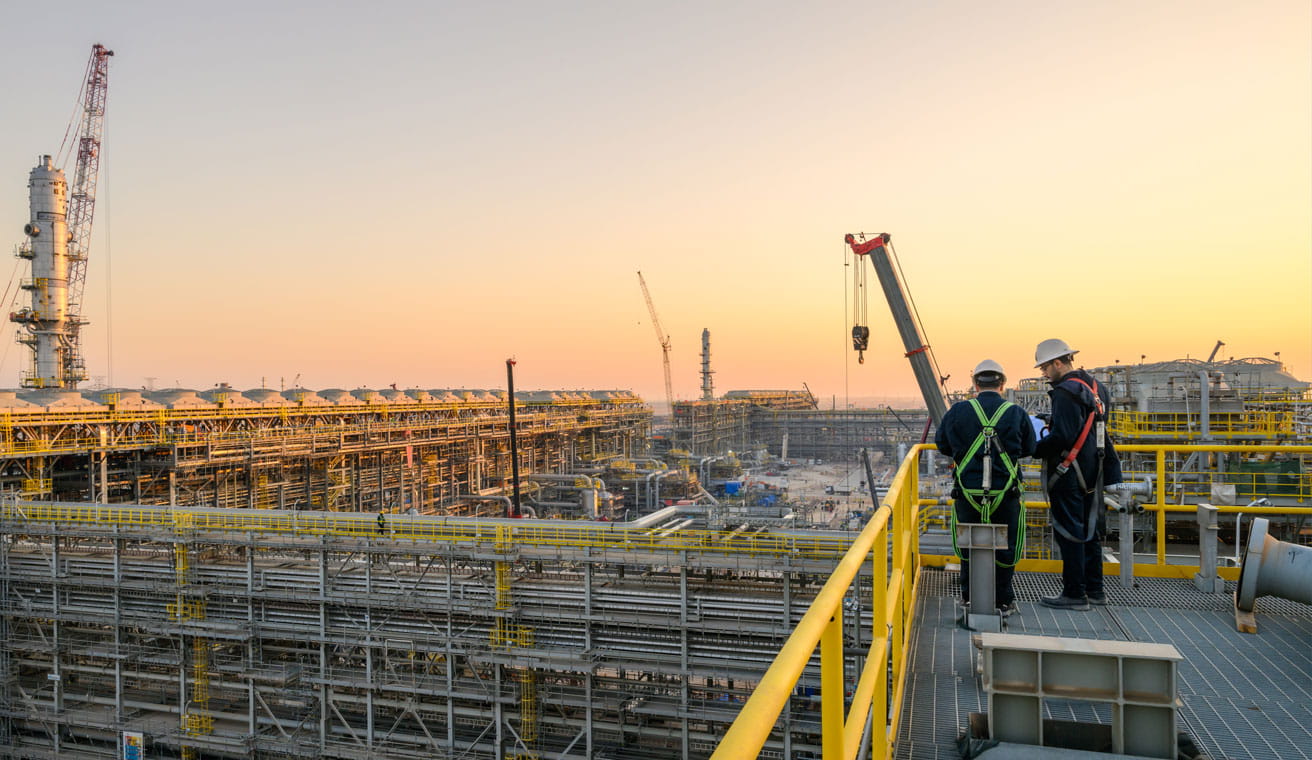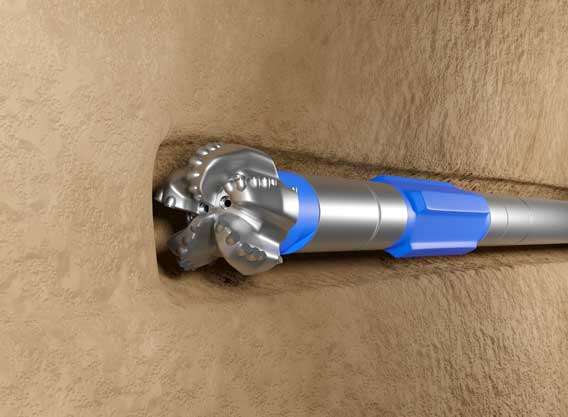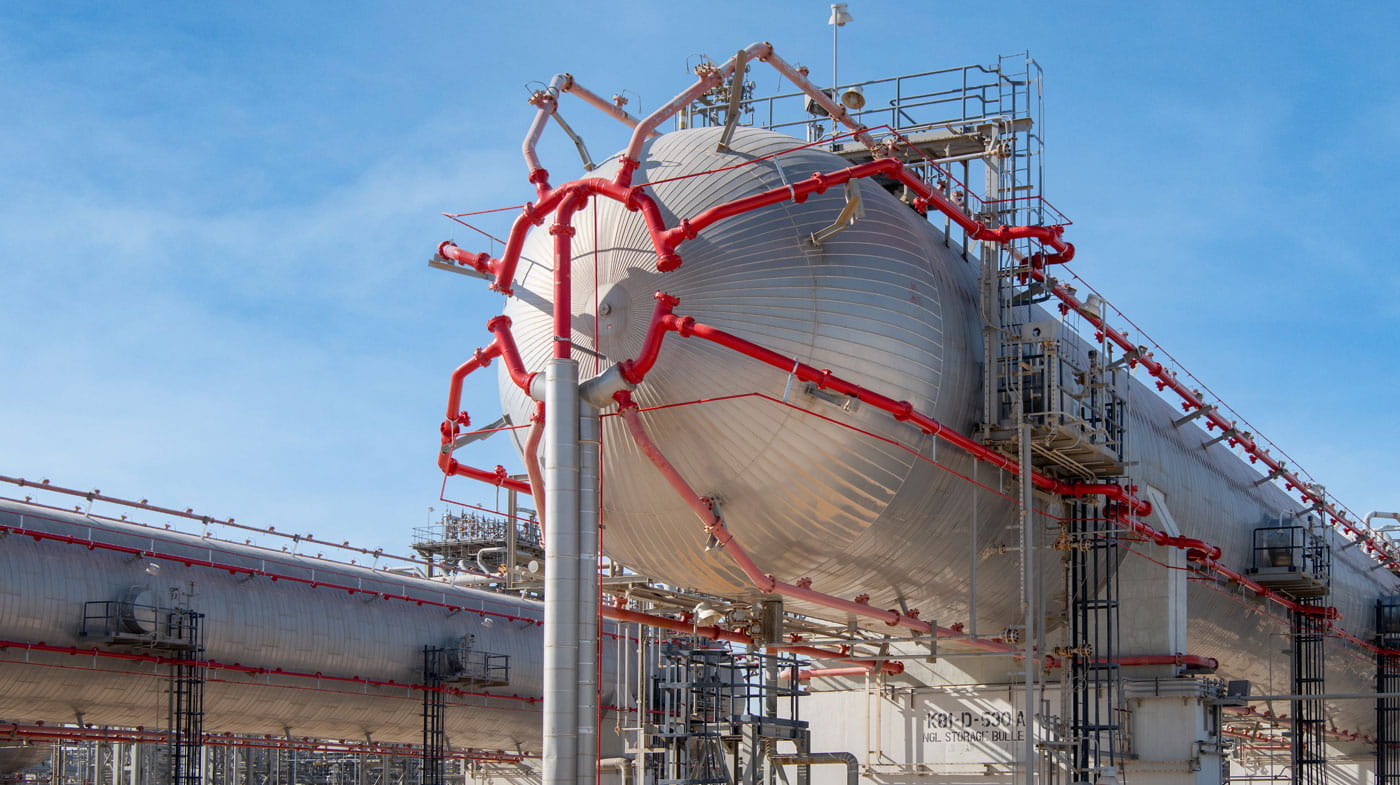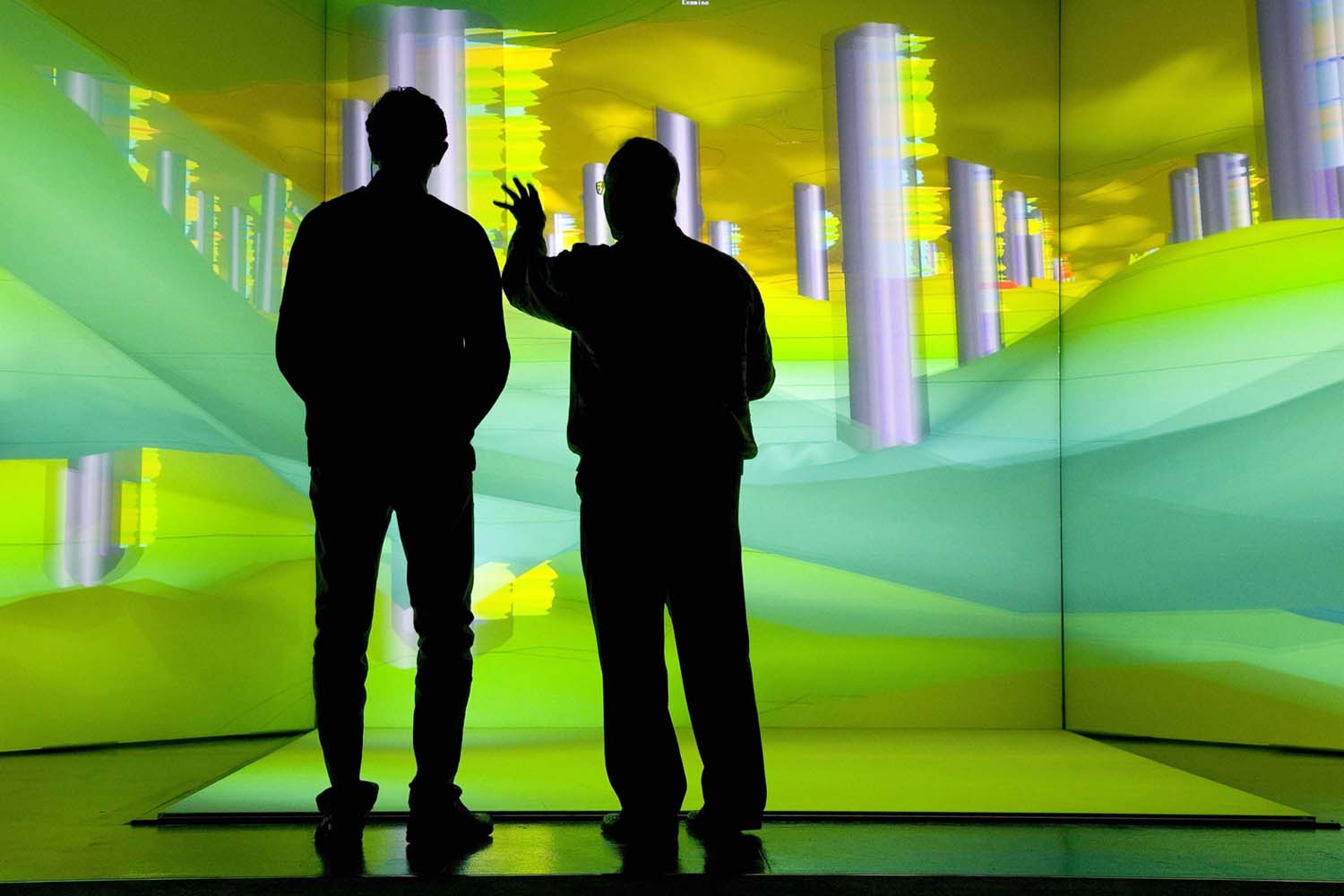
Unconventional resources
Since the 1970s, we have been capturing the natural gas that is released from our reservoirs as a byproduct of oil production. For decades we’ve harnessed the potential gas holds as both a lower-carbon source of energy to use in the Kingdom’s power generation and a feedstock for domestic industry.
We aim to access more of this valuable energy source by exploring and developing Saudi Arabia’s considerable unconventional gas reserves.

What are unconventional resources?
Unconventional resources are energy resources found in reserves where the hydrocarbons are trapped tightly inside layers of rock, and can only be accessed using specially adapted techniques such as horizontal drilling and hydraulic fracturing.
Unconventional gas resources — often called tight gas or shale gas — are becoming increasingly important as both global and domestic energy demand continues to grow. We are exploring and developing these resources, and putting in place the infrastructure required to access unconventional reserves in fields such as North Arabia, South Ghawar, and Jafurah.
At peak production, unconventional gas generated by our program is expected to displace the equivalent of approximately 500,000 barrels of crude oil per day from use in energy generation. This crude oil can then be used in the creation of a range of valuable products.
Where is unconventional gas found?
Traditionally, accessing natural gas resources involves drilling into rock formations to unlock large reservoirs of methane-rich hydrocarbon gas, which can then flow freely to the surface where it is then captured for use. Unconventional gas resources, by contrast, are trapped tightly in dense shale rock formations.
In the past, even though these formations contain huge amounts of gas, it was considered too difficult and too costly to access them. But advanced techniques such as horizontal drilling and hydraulic fracturing have made them more easily accessible.
Recovering shale gas
A standard way of recovering shale gas involves pumping fluids containing sand, water, and chemicals into wells to break up the rocks and release the trapped shale gas, as well as aid its flow. Aramco has developed techniques that use seawater in place of these fluids to utilize natural resources, such as fresh or waste water, for other purposes.
This process takes place thousands of meters underground, releasing the gas so it can be brought to the surface, treated, transported through our Master Gas System, and put to use in power stations and industrial facilities across Saudi Arabia.
Our unconventional gas fields

Our unconventional gas program could help provide greater access to lower-cost and lower-carbon energy in the Kingdom.
Jafurah
Jafurah is the largest unconventional gas field so far discovered in Saudi Arabia. Originally estimated to contain around 200 trillion standard cubic feet (scf) of gas, and 60 BSTB of condensate, Jafurah’s reserves were re-assessed in 2023 and significantly revised upwards to 229 trillion scf of gas-in-place and 75 BSTB of condensate-in-place. Production is anticipated to start in 2025, with an ambition to ramp-up and deliver a sustainable gas rate of two billion scfd of sales gas by 2030, along with 420 million scfd of ethane and around 630,000 barrels per day of gas liquids and condensates.South Ghawar
An unconventional gas field located south and west of the giant Ghawar oil field, South Ghawar commenced production of 300 million scfd of natural gas in late 2023. This was Aramco’s first unconventional tight gas production. South Ghawar’s strategic goal is to expand production and processing capacity in order to be able to deliver up to 750 million scfd of raw gas in the future.North Arabia
North Arabia was Aramco’s first unconventional gas project, and came online in 2018. It supplies more than 200 million scfd of natural gas for lower-carbon emission power generation in the domestic power sector — and for use in industrial projects in the region.Boosting the economy
Natural gas is one of the essential parts of a successful Energy Transition. To increase production in response to the large and growing domestic and global demand, we aim to continue exploring and developing Saudi Arabia’s unconventional resources and invest in expanding and enhancing our existing natural gas infrastructure.
Our unconventional gas program is expected to support the growth of our high-value chemicals business, and play an important role in our aspirations to develop a global-scale blue hydrogen and ammonia sector in the Kingdom of Saudi Arabia.
The growing and evolving unconventional gas program underway at these three fields — North Arabia, South Ghawar, and Jafurah — will help provide lower-cost and lower-carbon energy, while generating both direct and indirect jobs for the local economy.
Latest finds
Our exploration efforts never stop, and boosted by the knowledge of our experts, and our technological innovations, we’re discovering yet more of the Kingdom’s hidden unconventional resources.
Recent unconventional finds include:
- The Al-Ladam and Al-Farouq unconventional oil fields — Aramco’s first — which were discovered in the Eastern Province and announced by Saudi Arabia’s Ministry of Energy in July 2024.
- The Qusaiba unconventional gas reservoir was discovered in the Mihwaz field in the Eastern Province and announced by the Ministry of Energy in April 2025.
